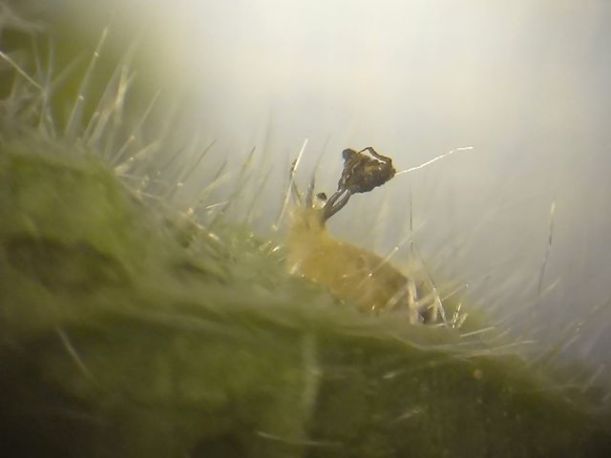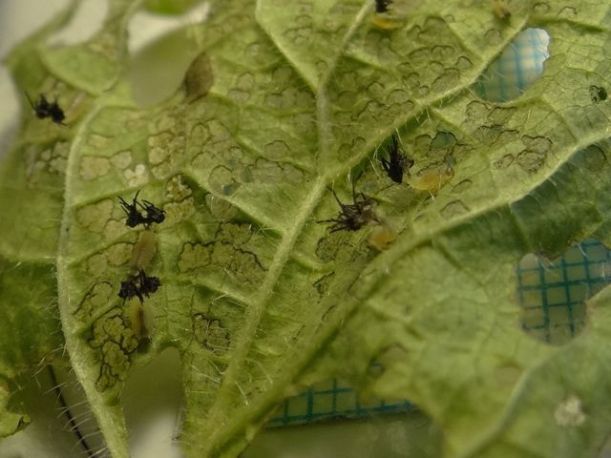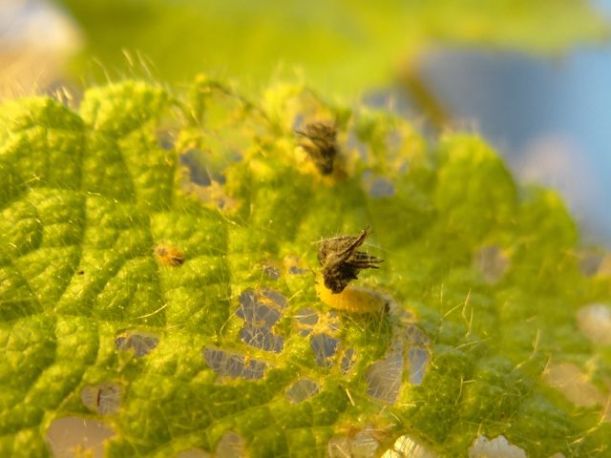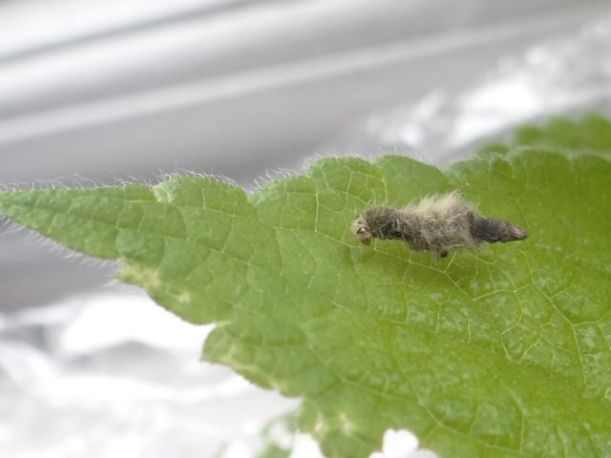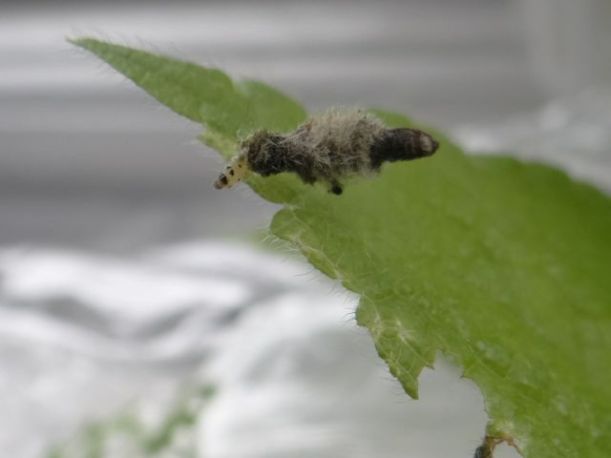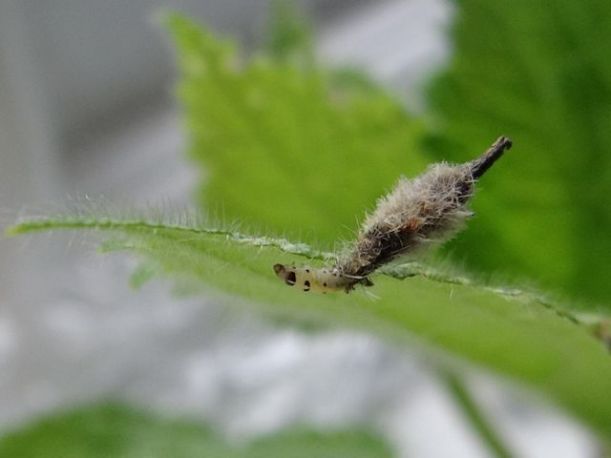Well, the Green Tortoise Beetle eggs hatched after 12 days (indoors – the outside ones haven’t hatched yet), and they are now almost two weeks old. But they have very strange ways… Do not read on if you are of a sensitive disposition. You have been warned.
This is one that was only just hatched, in side view. It was all of about 2mm long, so getting things in focus was tricky. The leaf hairs of the woundwort leaf look like a forest.
At the rear end of the larva, there are four dark spines. In between the spines is the anus, which is extensible and can be directed towards the upper two spines. The big brown blob is excrement, which they use as a disguise. Delightful.
These next ones were probably the first to hatch, as they have had time to accumulate quite a decoration. It’s a slow process – about twenty minutes to produce each of those little brown sticks (maybe they have to let it dry gradually – ugh!)
This is how they looked a few days later, after giving them some fresh woundwort leaves:
And here’s how they look now, looking nothing like beetles at all, but about 5 mm long, and carrying a huge load. It includes cast larval skins as well as more excrement.
While I was checking the woundwort, to see if the outdoors ones had hatched, I came across another woundwort specialist. I would have missed it, thinking it was just a bit of dead leaf, if I hadn’t seen something very similar on the ispot wildlife identification website. The woundwort was a big clue for identifying it, and a bit of googling led me to the Woundwort Case-bearer moth. It’s also described on the UKmoths site – but it’s hardly an exciting looking moth.
The hairs on the casing come from the woundwort leaf – I think it cuts bits of leaf to make a cover like a tea-cosy. (Do you remember those? My aunt made one – it was thickly padded and had a clip at the top like a handbag – I’ve never seen another one like it.)
I assumed it was a pupa, and put it in the bottom of the box with the Green Tortoise Beetles, hoping that it might eventually hatch out. However, the next day, I realised it had moved, and that there was other evidence that it was a larva.
It has been in there for several days, moving around when I wasn’t looking, but today I found it on the bottom of the box, looking dried out and dead.
However, when I looked again, it had moved itself back onto a dried-up leaf, so I put it onto the fresh leaves.
It came out to say hello!
It clearly didn’t like being exposed on the top of the leaf, and within a few minutes it had crawled over the edge to the underside – very hazardous when all it has to hang on with are tiny little feet, amongst all those long hairs, and dragging round its huge case.
Well, that’s turned into rather a long post. I also have loads of photos of colourful bugs from last weekend, when I repeated the Garden Bioblitz that I did a year ago. I was surprised to find quite a lot more different species – but I think I’ll save that for another day.

